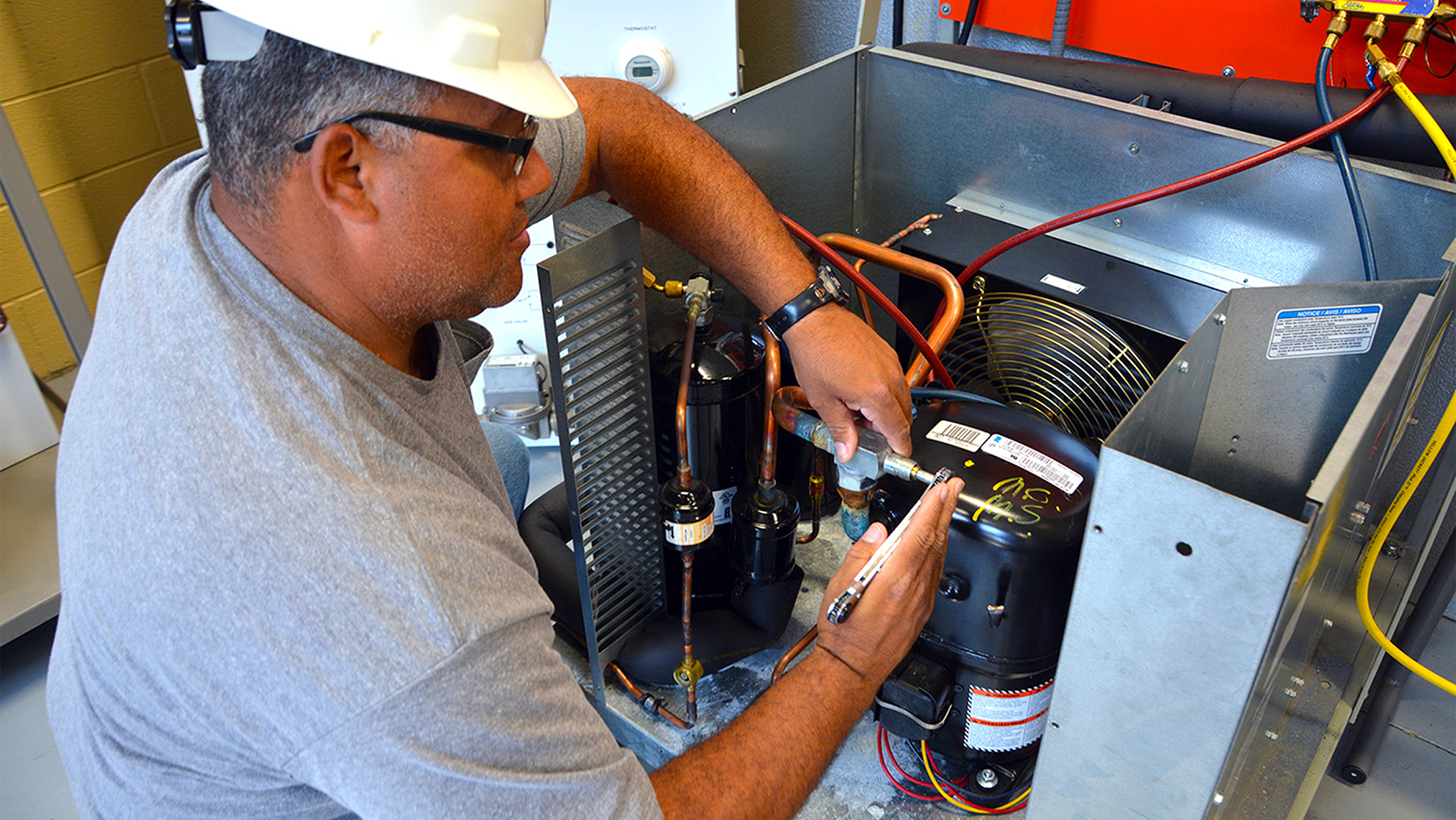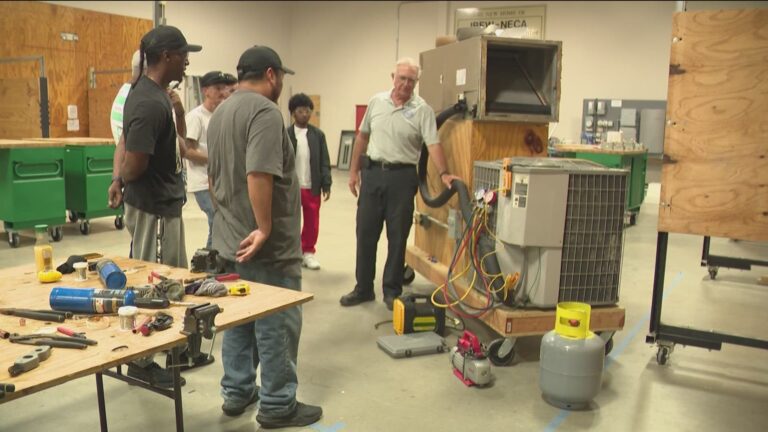Table of Contents
What does HVAC stand for, its components and how does it work.

Ever wonder how your house stays cozy in winter and refreshingly cool in summer? It’s all thanks to your HVAC system, the invisible hero keeping you comfortable year-round. But what exactly is HVAC, and how does it work its magic?
What Does HVAC Stand For?
HVAC stands for Heating, Ventilation, and Air Conditioning. It refers to the systems used to control the temperature, humidity, and air quality in buildings. In simpler terms, it’s what keeps you comfortable all year round, whether it’s sweltering hot in the summer or freezing cold in the winter.
It encompasses the entire system that regulates temperature, humidity, and air quality within your home or building.
The 3 main components of an HVAC system are:
Heating: This part of the system is responsible for generating heat, typically using a furnace, boiler, or heat pump. The heat is then distributed throughout the building through a network of ducts or pipes.
Ventilation: This part of the system brings in fresh air from outside and removes stale, polluted air from inside. This is important for maintaining good indoor air quality and preventing the buildup of harmful toxins.
Air conditioning: This part of the system cools the air and removes humidity. This is essential for keeping you comfortable in hot weather and preventing the growth of mold and mildew.
Ventilation: This part of the system brings in fresh air from outside and removes stale, polluted air from inside. This is important for maintaining good indoor air quality and preventing the buildup of harmful toxins.
Air conditioning: This part of the system cools the air and removes humidity. This is essential for keeping you comfortable in hot weather and preventing the growth of mold and mildew.

HVAC systems are essential for:
Comfort: They keep you comfortable year-round by maintaining a consistent temperature and humidity level.
Health: They provide fresh air and remove pollutants, which can help improve your health and well-being.
Efficiency: Modern HVAC systems are designed to be energy-efficient, which can help you save money on your energy bills.
Health: They provide fresh air and remove pollutants, which can help improve your health and well-being.
Efficiency: Modern HVAC systems are designed to be energy-efficient, which can help you save money on your energy bills.
Here are some of the most common types of HVAC systems:
Central air conditioning: This type of system uses a central unit to cool and dehumidify the air, which is then distributed throughout the building through ducts.
Split-system air conditioning: This type of system has two units: an indoor unit and an outdoor unit. The indoor unit cools the air, while the outdoor unit removes heat from the air.
Heat pump: This type of system can both heat and cool your home. In the winter, it works like an air conditioner, but in the summer, it works like a refrigerator in reverse, extracting heat from inside and releasing it outside. Furnace: This type of system uses a burner to generate heat, which is then distributed throughout the building through ducts. Boiler: This type of system uses hot water to heat your home. The hot water is circulated through pipes and radiators, which heat the air in the room.
Split-system air conditioning: This type of system has two units: an indoor unit and an outdoor unit. The indoor unit cools the air, while the outdoor unit removes heat from the air.
Heat pump: This type of system can both heat and cool your home. In the winter, it works like an air conditioner, but in the summer, it works like a refrigerator in reverse, extracting heat from inside and releasing it outside. Furnace: This type of system uses a burner to generate heat, which is then distributed throughout the building through ducts. Boiler: This type of system uses hot water to heat your home. The hot water is circulated through pipes and radiators, which heat the air in the room.
How the HVAC system works:
1) You set your desired temperature on the thermostat.
2) The air conditioner or furnace springs into action, aiming to reach that sweet spot.
3) The air conditioner uses refrigerant to absorb heat from inside, releasing it outdoors. Think of it as a heat exchange mission.
4) The furnace, like a tireless chef, cooks up warmth using fuel or electricity.
5) Air filters act as vigilant guards, capturing dust, allergens, and other unwanted guests.
6) Registers become the doorways, allowing conditioned air to flow freely throughout your domain.
2) The air conditioner or furnace springs into action, aiming to reach that sweet spot.
3) The air conditioner uses refrigerant to absorb heat from inside, releasing it outdoors. Think of it as a heat exchange mission.
4) The furnace, like a tireless chef, cooks up warmth using fuel or electricity.
5) Air filters act as vigilant guards, capturing dust, allergens, and other unwanted guests.
6) Registers become the doorways, allowing conditioned air to flow freely throughout your domain.
Remember: Regular maintenance is key to keeping your HVAC system operating efficiently and effectively. Just like a well-oiled machine, proper care ensures optimal performance and comfort all year round.
By understanding your HVAC system, you can make informed choices about maintaining it, troubleshooting issues, and even potentially saving energy.Sign up for our hvac training program to learn everything you need to know from the basics to professional development
What are the different types of HVAC systems? -
The most common types include: Split systems (separate furnace and AC), heat pumps, packaged units (combined furnace and AC), boilers, etc.
How can I troubleshoot minor HVAC issues?
Before calling a professional, try:
1) Checking air filters for clogs and replacing them if needed.
2) Adjusting thermostat settings to ensure they’re programmed correctly.
3) Verifying circuit breakers haven’t tripped and resetting them if necessary.
4) Looking for any visible blockages around vents or outdoor unit.
2) Adjusting thermostat settings to ensure they’re programmed correctly.
3) Verifying circuit breakers haven’t tripped and resetting them if necessary.
4) Looking for any visible blockages around vents or outdoor unit.
How much does a new HVAC system cost?
– Prices vary depending on factors like size, type, efficiency, and installation complexity. Expect a range of $3,000-$10,000+ for installation.
